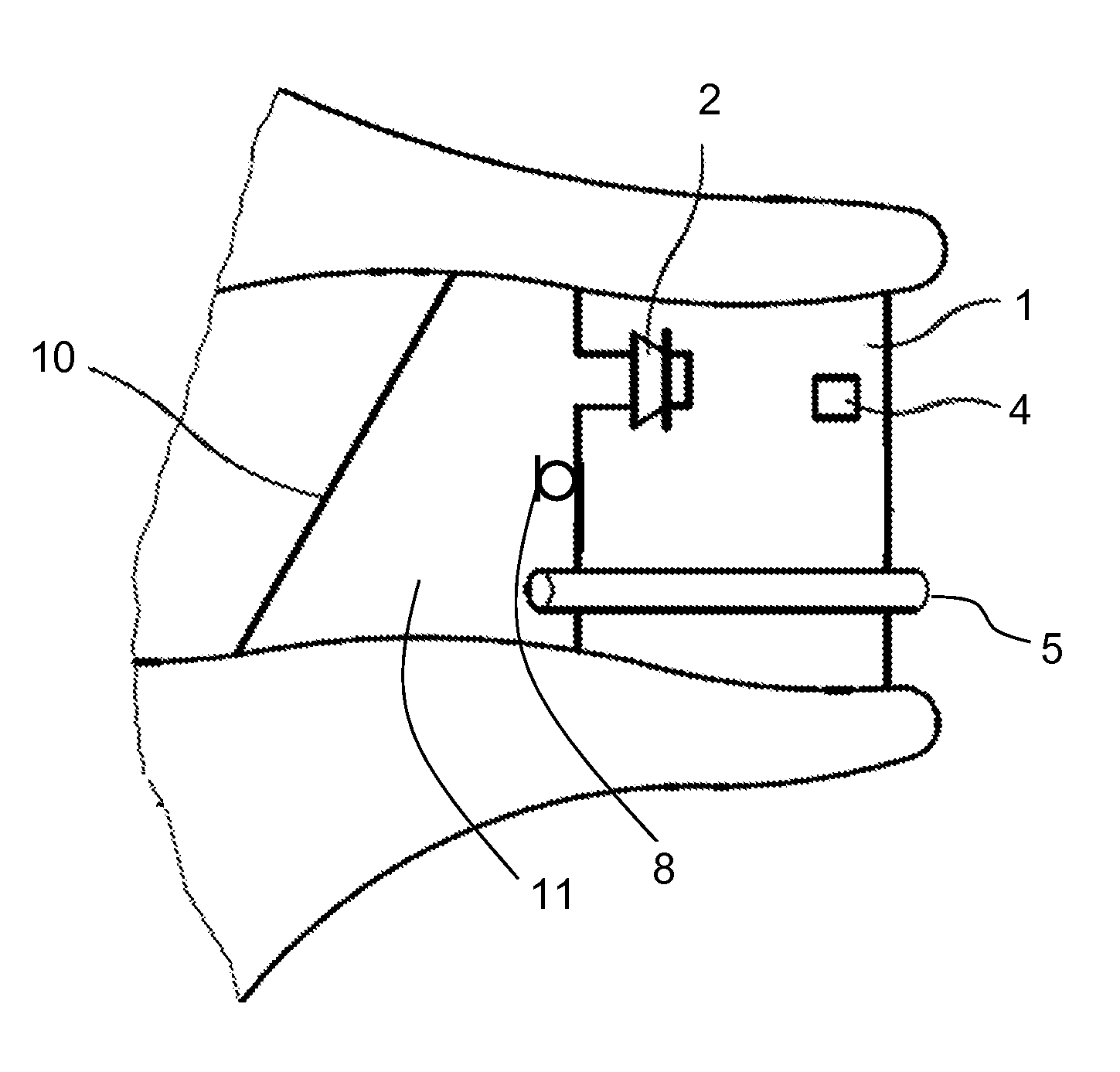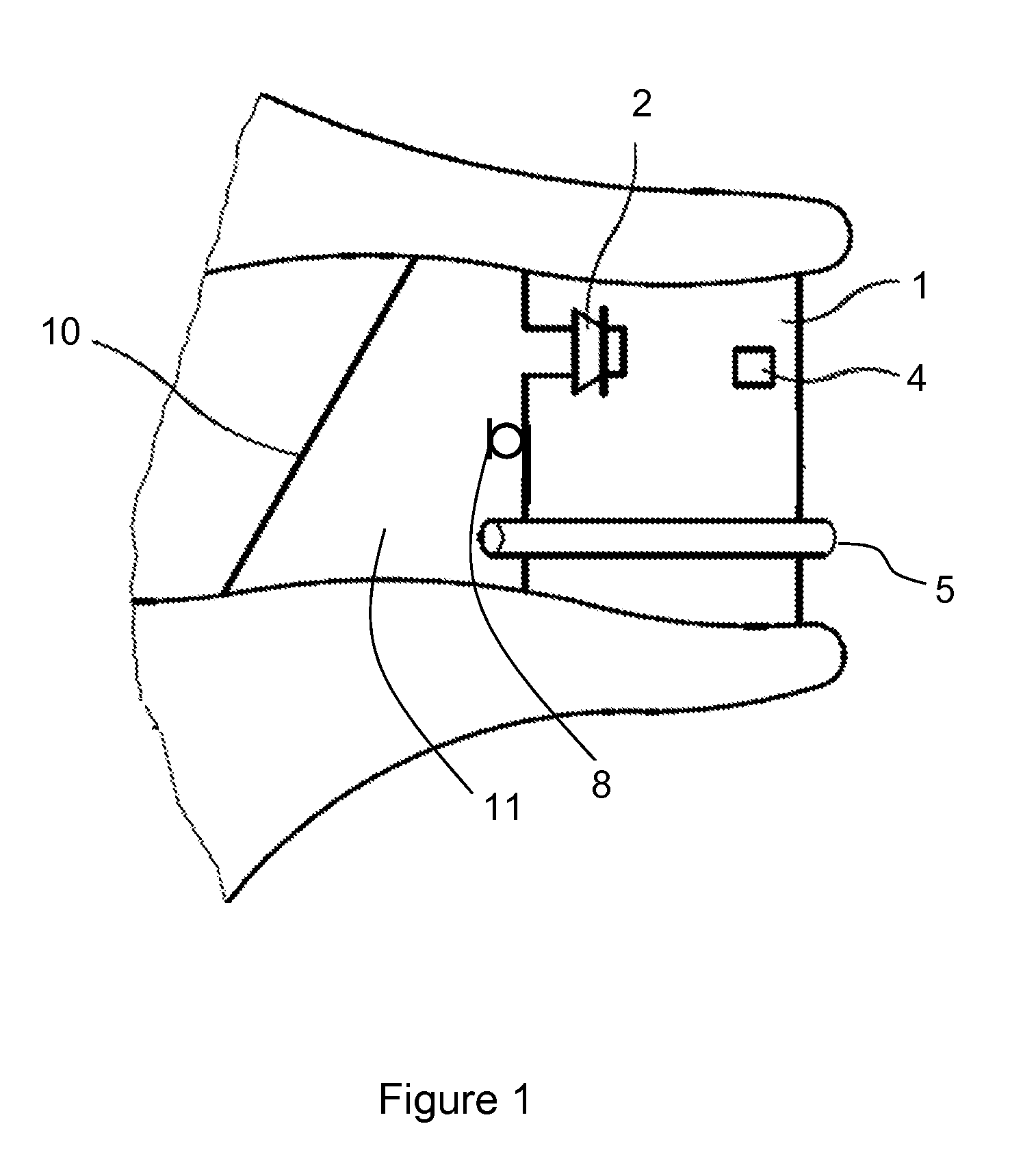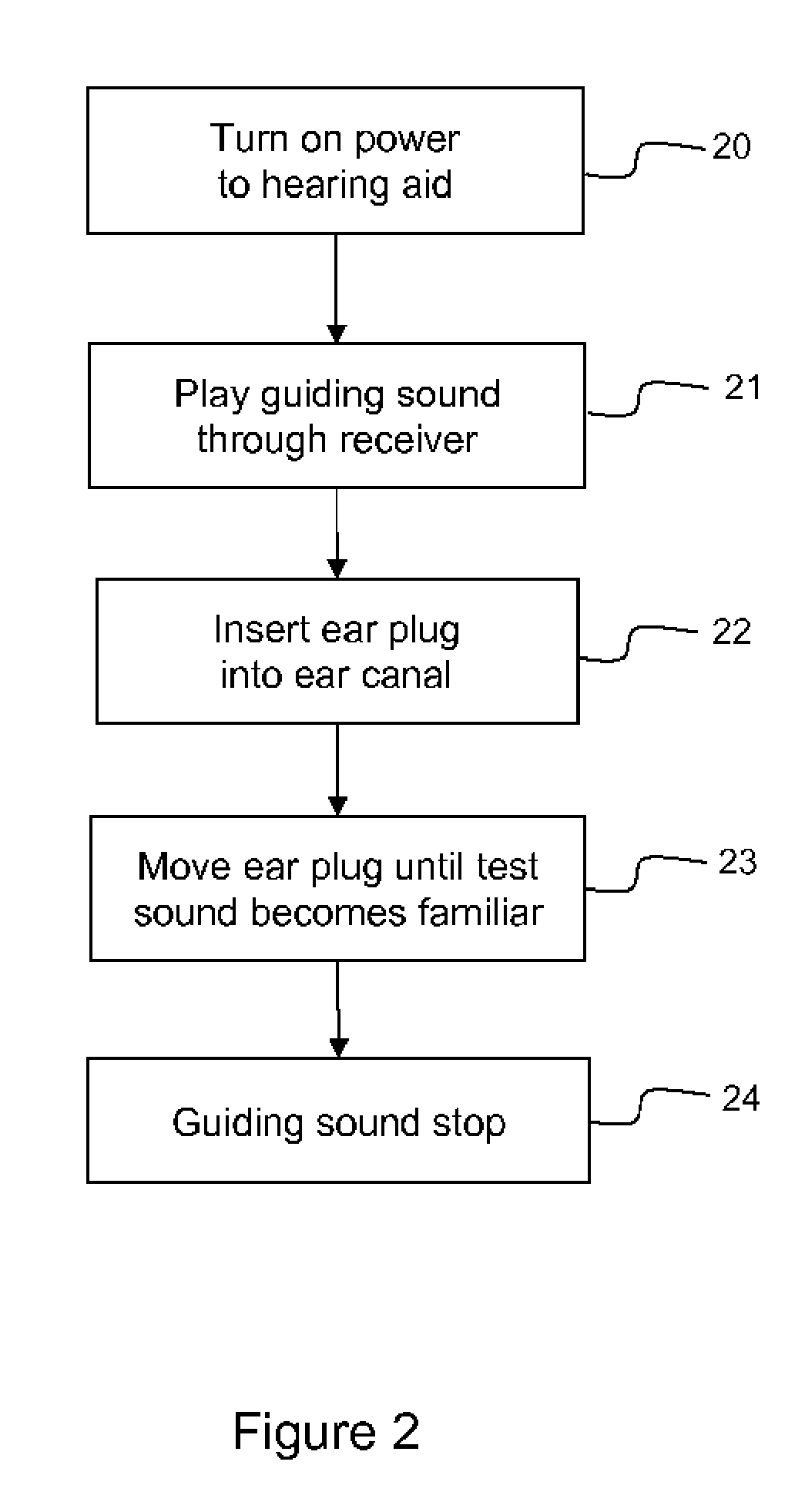Hearing aid with guiding means for insertion
a technology of guiding means and hearing aids, applied in the field of hearing aids, can solve problems such as the application of measuring instruments to achieve the effect of not being too high in the sound pressure level
- Summary
- Abstract
- Description
- Claims
- Application Information
AI Technical Summary
Benefits of technology
Problems solved by technology
Method used
Image
Examples
Embodiment Construction
[0028]FIG. 1 shows a completely-in-the-canal hearing aid 1 arranged in the ear canal 11 of a hearing aid user. The hearing aid 1 comprises a receiver 2 for generating an acoustic output in front of the ear drum 10, and an opening 4 for a microphone arranged in order to detect acoustic signals from outside the ear of the hearing aid user, i.e. from the surroundings. The hearing aid 1 further comprises a ventilation channel 5, i.e. an intentional air leak, e.g. for the purpose of reducing occlusion.
[0029]The hearing aid of FIG. 1 could also represent an in-the-ear hearing aid arranged partly in the canal and partly in the concha. Further, it could represent the ear plug part of a behind-the-ear hearing aid. In some behind-the-ear hearing aids the receiver is arranged in the ear plug part as illustrated in FIG. 1, in others the receiver is arranged in the behind-the-ear part and the sound guided to the ear plug part through a sound tube.
[0030]The ventilation channel 5 is an option whic...
PUM
 Login to View More
Login to View More Abstract
Description
Claims
Application Information
 Login to View More
Login to View More - R&D
- Intellectual Property
- Life Sciences
- Materials
- Tech Scout
- Unparalleled Data Quality
- Higher Quality Content
- 60% Fewer Hallucinations
Browse by: Latest US Patents, China's latest patents, Technical Efficacy Thesaurus, Application Domain, Technology Topic, Popular Technical Reports.
© 2025 PatSnap. All rights reserved.Legal|Privacy policy|Modern Slavery Act Transparency Statement|Sitemap|About US| Contact US: help@patsnap.com



